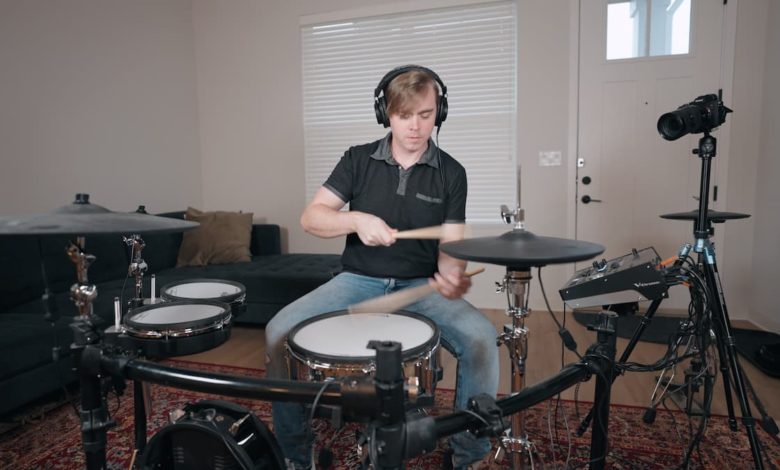
We may earn a commission from the affiliate links on this site. Learn more›
If you’ve played an electronic drum set, you know that the hi-hat is the least realistic part of the kit. As a result, drummers are forced to compensate while playing—always hyperaware of the pesky electronic hi-hat, focusing on taming that pad rather than on playing.
Hopefully, Roland has a solution for us. In this article, I’ll unbox and review the new-ish VH-14D—supposedly the most realistic hi-hat controller available.
I hope the VH-14D has a greater dynamic range, more accurate articulations and triggering, and a more realistic feel. Let’s dive in.
This is a sponsored article. Sweetwater sent me the VH-14D for this review. If you pick up the hats and use my affiliate links, I will make a small commission at no cost to you.
Roland VH-14D Electronic Hi-Hat Review
Imagine playing the most detailed and articulate electronic hi-hats available. The newest hi-hat controller from Roland takes e-kit realism to the next level.
The VH-14D is Roland’s newest electronic hi-hat pad, featuring 14″ top and bottom pads, a digital USB connection, and the most advanced bow/edge sensors available.
Key Takeways
- The VH-14D triggering is flawless
- Integrates with TD-50X, TD-50, and TD-27 drum modules
- 14″ size hi-hat pads for added realism
- Great articulation for a better playing experience and sound quality from existing samples
- Best open/close triggering available on the market
First off, I was impressed by the size of the hi-hat. I’m coming from VH-10, so this is a massive upgrade. Having a realistically-sized hi-hat is a huge plus. Both pieces are very firm and robust. The bell is larger, and the top cymbal is a bit thinner overall compared to the VH-10.
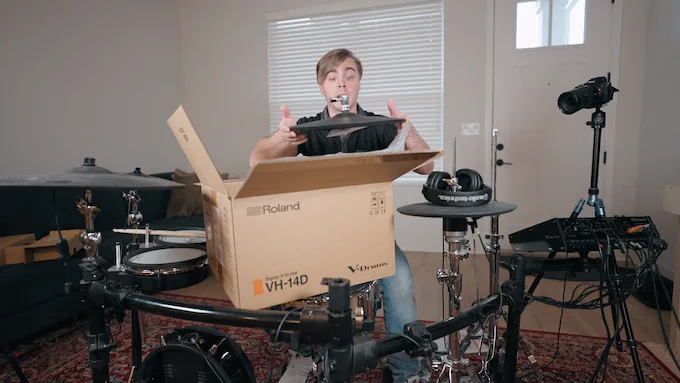
Once set up, I was also blown away by the performance. The articulations are much more detailed and accurate. Six-stroke rolls between the edge and bow sound 1000x more realistic, and I have greater control over opening and closing the hi-hat.
The pads don’t feel too heavy or too light in terms of weight—they feel just like a set of traditional hi-hat cymbals.
Grooving on a basic eighth-note beat feels far better and more realistic. When using the VH-10, the hi-hat was the one thing holding the TD-50 kit back.
I thought, “oh, maybe it’s just the samples, or I’m playing poorly today.” It turns out it was the triggering. Even with the sub-par samples from the TD-50, each kit sounds better, just from upgrading the triggering of the hi-hat.
I can open the hi-hat a tiny bit for softer accents or open it entirely for a splashier sound. The level of detail is unmatched by any other electronic hi-hat I’ve ever played.
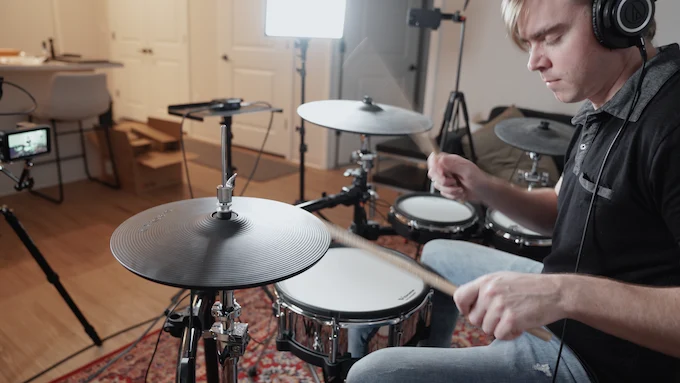
For example, I can play a standard groove with the hats tight, closed, barely open, half open, fully open, etc. There’s an incredible level of detail in the design of the sensors for different articulations.
Foot splashes are no issue, either. Back with the VH-10, I recall trying to splash the hat, noticing that the sound would sometimes be cut off randomly. With the VH-14D, foot splashes work consistently (something I highlight at the start of my review video).
The VH-10 always felt a little clunky when I played. This is no longer the case with the VH-14D. I’m coming off a little like a sales pitch talking about the instrument, but I honestly was blown away when testing it initially.
The elephant in the room regarding the VH-14D is the price. It’s far too expensive for most drummers to consider adding to their setup—on top of their already costly electronic drum sets. The digital hats retail at $1,149.99, a price out of most drummers’ budgets. The VH-14D is 100% worth every penny if you can swing it.
Is the upgrade worth it from the VH-13? I don’t own those hats, nor have I used them, so it’s hard to say. Justin, from 65 Drums, made an excellent video comparing the two. VH-13 owners, be sure to watch!
Which Roland kits are compatible with the VH-14D?
Roland doesn’t have a specific list, but from what I can tell, all drum modules with digital USB inputs can use the VH-14D. This includes:
- TD-50X
- TD-50 (requires firmware update to 1.09)
- TD-27 (requires firmware update to 1.11)
Roland VH-14D Assembly
Unboxing the VH-14D was simple. The box isn’t too large, nor is it that heavy. Inside are the two pieces of the instrument, along with cables, a memory clamp, and a manual.
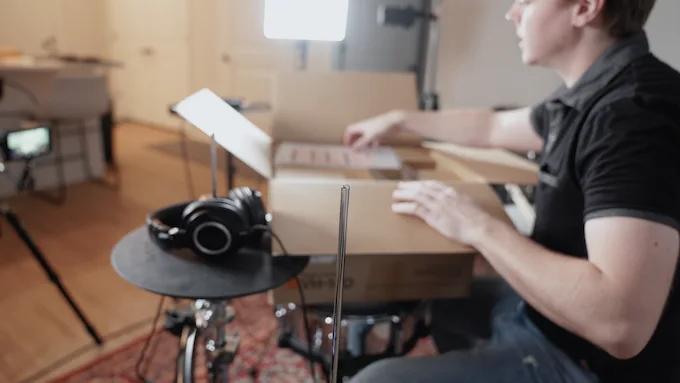
The box and protective plastic wrap coving the VH-14D are above par in typical Roland fashion. However, I had to be careful while unwrapping the plastic, as it stuck to the cabling of the bottom hi-hat piece.
Assembly was also fairly straightforward. First, I added the memory lock to my hi-hat stand. Since I have a DW 9000, I need to use the L-sized clamp.
The memory clamp keeps the hi-hat cymbals from spinning on the stand (similar to the VH-13). The black wires fit into the metal piece on the bottom hi-hat cymbal.
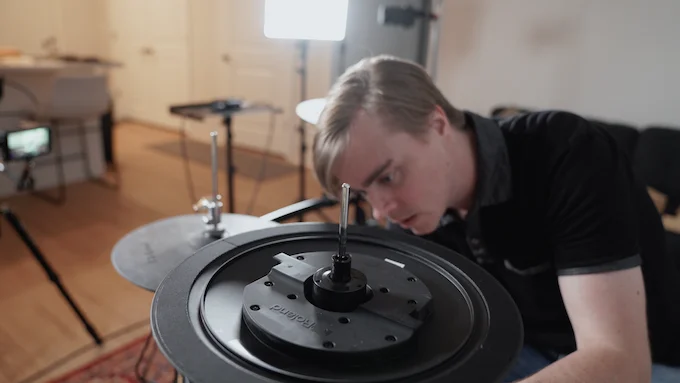
I then put the bottom hi-hat cymbal on the stand, making sure to have the Roland logo facing straight so I could read it (it’s essential to keep the logo at 12 o clock from your sitting position when you look at it).
Next was to grab the top cymbal pad. This pad has two TRS cables on both the left and right sides. These cables go into connectors A and B on the bottom cymbal (both are labeled appropriately.
And that’s the majority of the physical setup! However, I still needed to update my TD-50 firmware since version 1.07 does not support the VH-14D.
Once updated, the TD-50 prompted me to calibrate the hi-hat, but I hit the wrong button. It took me out of the calibration, and I still need to figure out how to get back to that page. But I didn’t need to calibrate it—it worked flawlessly right out of the box!
I tested every articulation using 16th notes on the bow and 8th notes on the edge. It’s incredible how seamless the open-to-closed transitions are from zone to zone. When I tested the VH-10 and VH-14D back and forth, the comparison was night and day. Honestly, I never want to play the VH-10 again.
Who should upgrade to the VH-14D?
Drummers already invested in the Roland ecosystem should consider upgrading to the new VH-14D hi-hats. You must own a TD-50X, TD-50, or TD-27 drum module. Some recent electronic drum sets from Roland may already include the new hats, so the cost of the upgrade may already be in the price of the kit.
Moving to the VH-14D is a big upgrade, so I’d only consider it if:
- The triggering of your current hi-hat is affecting your playing and practicing
- You have a large budget and can afford the upgrade
- You play professionally
- You want the best possible playing experience
Newer drummers learning to play the drums on a TD-27 kit may benefit less from the upgrade than professional drummers using their e-kits for practice or performing on stage.
Conclusion
Imagine playing the most detailed and articulate electronic hi-hats available. The newest hi-hat controller from Roland takes e-kit realism to the next level.
The VH-10 was a solid instrument, but with the advance of new technology, Roland has set the bar high again. We’re 95% of the way there when it comes to emulating an acoustic hi-hat electronically.
The VH-14D, while expensive, offers drummers the best hi-hat experience available—the triggering, articulations, and feel are flawless. I can confidently recommend it to most drummers, as the experience blew me away.
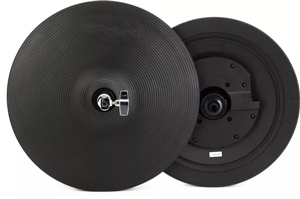

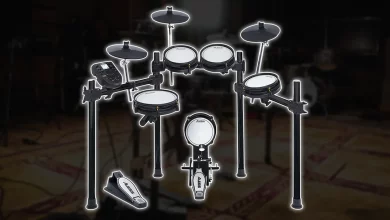
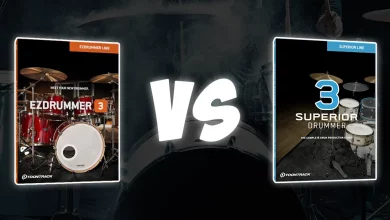
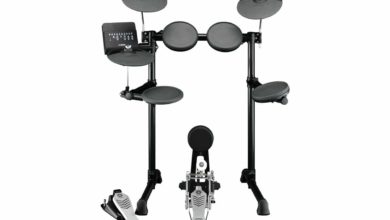
What is involved in upgrading the Roland TD-27 KV module to upgrade to VH 14D hi hats?
0
You need to be on firmware version 1.11 for the VH-14D to function properly. Outside of that, just connect the USB cable from the hi-hat to one of the digital inputs on the TD-27. You may need to run the calibration tool within the module.
More info: https://support.roland.com/hc/en-us/articles/4464842093979-TD-27KV-VH-14D-compatibility-and-setup-information
Hope that helps!
0